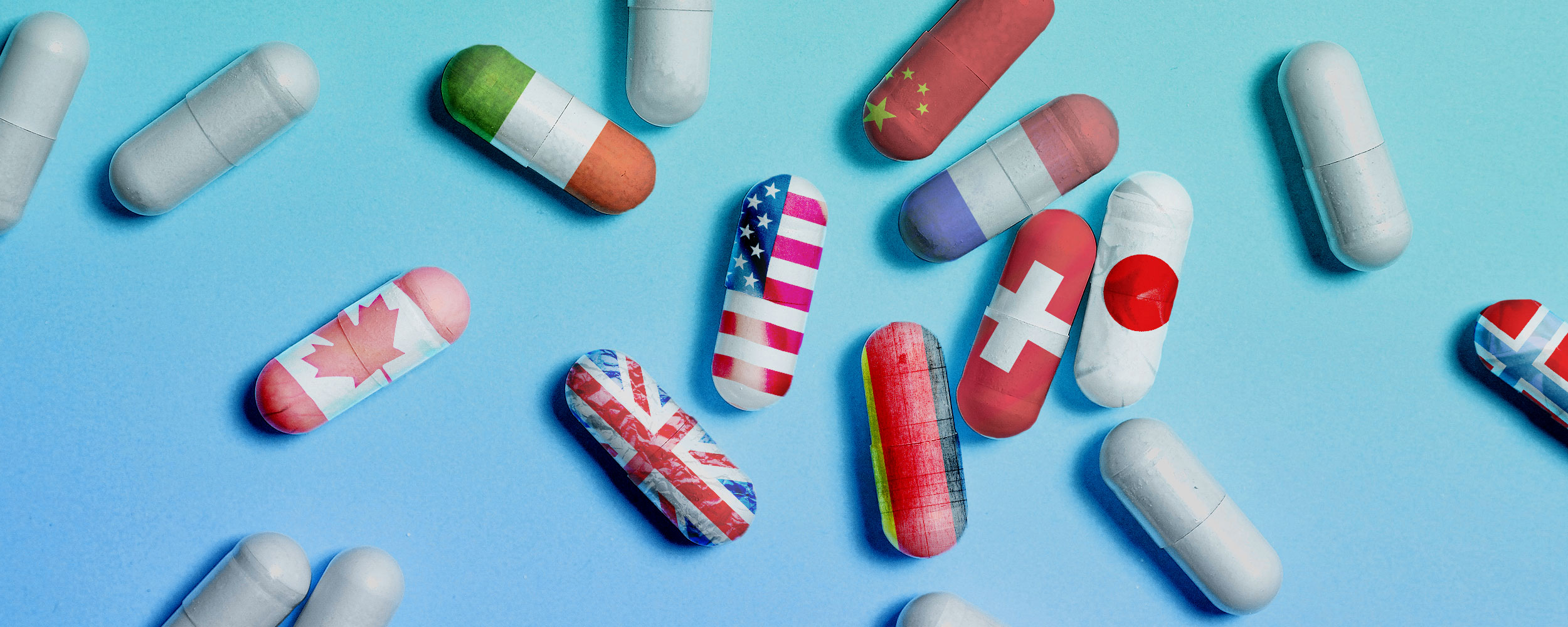
United We Spend
For 20 Top-Selling Drugs Worldwide, Big Pharma Revenue from U.S. Sales Combined Exceeded Revenue from the Rest of the World
By Rick Claypool and Zain Rizvi
Key Findings
- U.S. sales of the 20 top-selling drugs worldwide totaled $101.1 billion while sales to the rest of the world totaled nearly $57 billion. In other words, the U.S. spent almost double what the rest of the world combined did on these top 20 drugs.
- For 17 of the 20 top-selling drugs worldwide in 2020, pharmaceutical corporations made more money from U.S. sales than from sales to all other countries in the rest of the world combined.
- For 11 of the 20 top-selling drugs worldwide, U.S. sales revenue was double revenue to the sales of the rest of the world or more.
- 11 of the 13 pharmaceutical companies selling these top drugs made more money in the United States from these drugs than they did in the rest of the world combined.
- Drugs with significant sales revenue disparities between the U.S. and the rest of the world include:
- Gilead Sciences’ HIV medication Biktarvy, which had U.S. sales revenue five times greater than the rest of the world;
- AbbVie’s autoimmune disease drug Humira, which had U.S. sales revenue four times greater than the rest of the world; and
- Eli Lily’s type 2 diabetes drug Trulicity, Roche’s multiple sclerosis drug Ocrevus and Amgen and Pfizer’s autoimmune disease drug Enbrel, all three of which had U.S. sales revenue more than triple the rest of the world.
Analysis
Americans spend far too much on prescription drugs. Earlier studies have identified that the U.S. spends more per capita for prescription drugs than any other industrialized nation. In this analysis, we attempted to quantify the spending disparity by analyzing the sources of revenue for the 20 top-selling drugs globally in 2020.
For all 20 drugs, we compared U.S. sales revenue to global sales revenue as reported by the companies in annual filings with the U.S. Securities and Exchange Commission or, for companies based outside of the U.S., analogous annual reports. Revenue reported in sources in currencies other than U.S. dollars were converted to their U.S. dollar equivalent using the exchange rate of the date of the report. Where revenue from licensing marketing or sales of a drug to another company are reported, that revenue is not included. (For detailed footnotes that describe our methodology in further, download the full PDF version of this report.)
These annual filings show that for 17 of the 20 top-selling drugs worldwide in 2020, revenue to pharmaceutical companies from U.S. sales exceeded sales revenue from all other countries in the rest of the world combined. For 11 of the 20 top-selling drugs worldwide, U.S. sales revenue was double revenue to the sales of the rest of the world or more. U.S. sales of the 20 top-selling drugs totaled $101.1 billion while sales to the rest of the world totaled $56.8 billion. In other words, the U.S. spent almost double what the rest of the world combined did on these top 20 drugs. (see Table 1).
Table 1: Sales Revenue Disparities Between the U.S. and the Rest of the World for the 20 Drugs Generating the Greatest Sales in 2020
Source: Annual SEC filings and analogous annual reports for companies based outside of the U.S.
Drugs with significant sales revenue disparities include Gilead Sciences’ HIV medication Biktarvy, which had U.S. sales revenue five times greater than the rest of the world; AbbVie’s autoimmune disease drug Humira, which had U.S. sales revenue four times greater than the rest of the world; and Eli Lily’s type 2 diabetes drug Trulicity, Roche’s multiple sclerosis drug Ocrevus and Amgen and Pfizer’s autoimmune disease drug Enbrel, all three of which had U.S. sales revenue more than triple the rest of the world.
Another way of thinking about the revenue imbalance is to consider that for 11 of the 13 pharmaceutical companies selling these top drugs, most of the revenue from these drugs came from U.S. sales. AbbVie benefited the most from this disparity, bringing in more than $20 billion in revenue in U.S. sales from its top-selling drugs Humira and Imbruvica – five times more than international sales of the same two drugs (see Table 2).
Table 2: Sales Revenue Disparities Between the U.S. and the Rest of the World for the 20 Drugs Generating the Greatest Sales in 2020, by Company
Source: Annual SEC filings and analogous annual reports for companies based outside of the U.S.
This analysis of the billions more in revenue that pharmaceutical corporations make from the U.S. compared to the rest of the world offers a glimpse of how much these businesses benefit from the American health care system overpaying for drugs.
Our analysis is limited by a lack of transparency. Net prices are not publicly available. Differences in revenue may reflect differences in volume of drugs consumed. However, prior research has identified that Americans consume comparable amounts of drugs as people in other high-income countries.
Big Pharma is fighting to efforts to curb U.S. drug spending. Deceptive TV ads paid for by Big Pharma try to frighten and mislead Americans about new legislative efforts that would empower Medicare to negotiate drug prices. But drug manufacturers set prices to maximize profits, not recoup research and development costs.
Granting Medicare the authority to push back against pharmaceutical company profiteering would mean an end to decades of overpaying for medicines – and the beginning of billions in cost-savings that could be used to improve and expand Medicare, including by increasing access to treatments as well as to dental, hearing and visual care. Congress should allow Medicare to negotiate without delay.